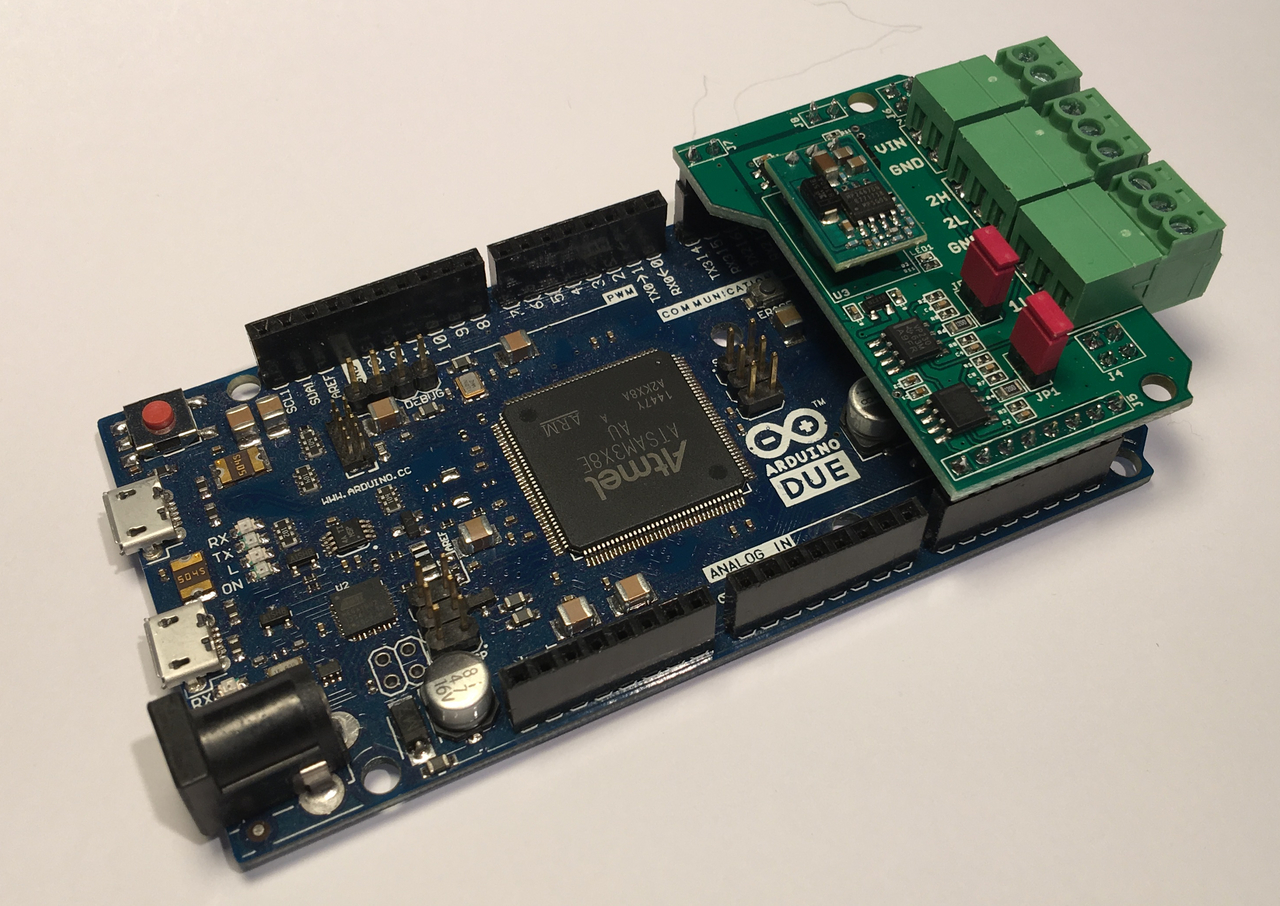Recent Posts
Arduino TFT Display Shield Includes CAN Bus Interface, Real-Time Clock, SD Card, I2S
Posted by on
The CleO50 by FTDI Chip is a 5″ smart TFT display shield for Arduino and MikroBUS. It includes a 5.0 inch 800×480 pixel TFT LCD panel with resistive touch, and PWM audio output with in-built speaker amplifier for advanced audio quality. These smart TFT display shields can be easily programmed by almost anyone to give professional looking HMI / GUI’s with no prior knowledge of complex graphics programming or mathematics.
This module features a larger PCB which has allowed for the addition of mikroBUS™ interface from MikroE, which provides access to a wider range of expansion cards (Click Boards) thus further extending the project potential with additional sensors and control boards beyond that already provided by Arduino shields. The device also benefits from an FT900 replacing the previous FT903, which allows further extension of interfaces available, and an FT812 replacing the previous FT810 to increase the level of color support offered.
Features
- Supports landscape and portrait modes
- Built-in FTDI FT812 embedded video engine (EVE) graphic controller
- Anti-aliased graphics throughout for much finer image quality with no "jaggies"
- Ready to use LCD module with resistive touch in panel mountable bezel
- USB DFU port for firmware updates
- Built-in 8M Byte Eflash memory
- PWM audio supported and in built speaker amplifier
- Supports MikroBUS interface
- Supports Micro SD card
- Supports camera interface
- Supports I2S interface
- Supports CAN bus
- Supports RTC function
- Designed as Arduino and NerO shield
- Compatible with FTDI CleO-RIO, CleO-Camera and CleO-Speaker
- CE and FCC certified
More Information
- Download/View the FTDI CleO50 Module data sheet (PDF)...
- Buy Online...
- More Information...
Arduino-Based ECU Development Board With Dual CAN Bus Interface
Leverage the power of an ARM Cortex M3 32-bit processing capability in combination with a dual CAN Bus interface to create your next CAN Bus or SAE J1939 application or prototype. By combining our dual CAN port interface, the Arduino DUE microcontroller, an OBD2 or SAE J1939 cable, and open-source software libraries you are ready to go with powerful a turn-key Arduino-based dual CAN bus solution.
Use the vast resources of Arduino software (sketches) and hardware components (shields) to create your CAN Bus, OBD2, or SAE J1939 application.
By combining our dual CAN port interface, the Arduino DUE microcontroller, an OBD2 or SAE J1939 cable, and open-source software libraries you are ready to go with powerful a turn-key Arduino-based dual CAN bus solution. Leverage the 32-bit processing capability of the Arduino DUE plus the built-in CAN ports for your next prototype.
In order to more efficiently serve automotive and industrial applications, the jCOM.CAN.DUE-X board supports an extended input power range of 7 to 36 VDC to power the entire system, i.e. including the Arduino Due itself.
 Loading... Please wait...
Loading... Please wait...


